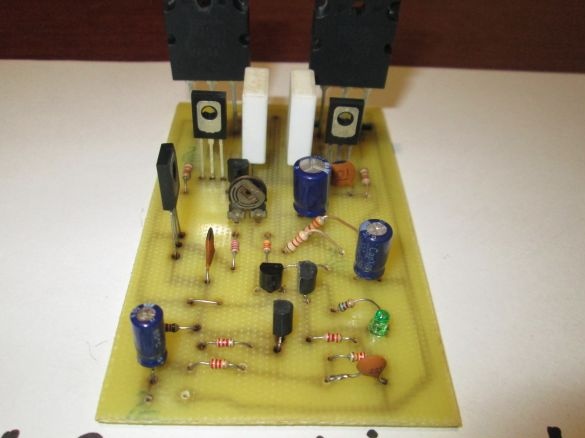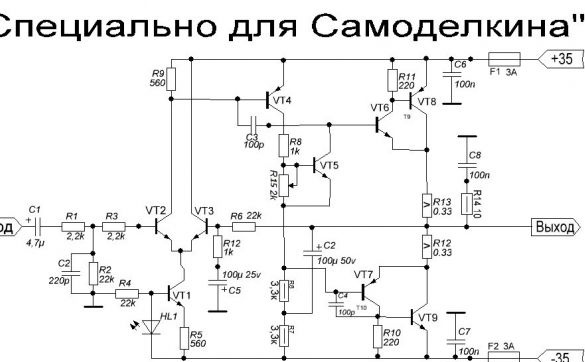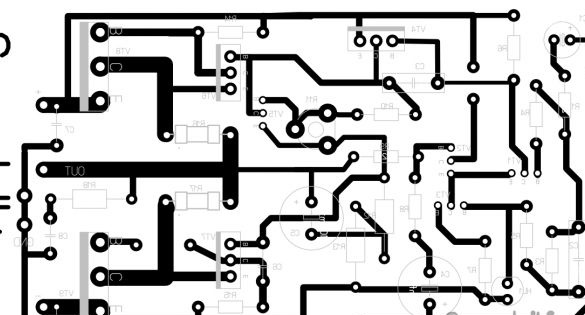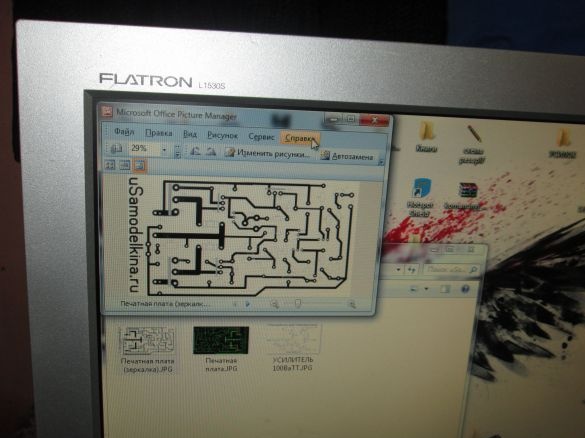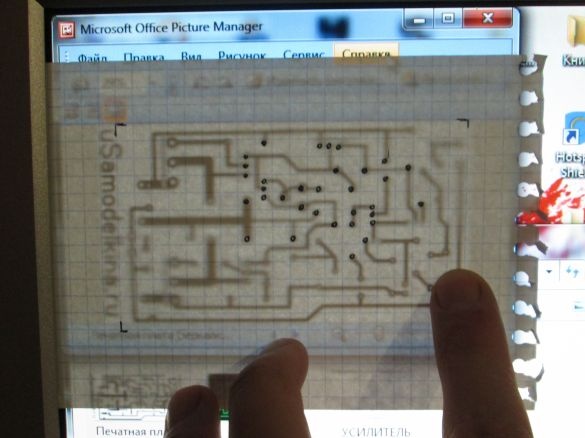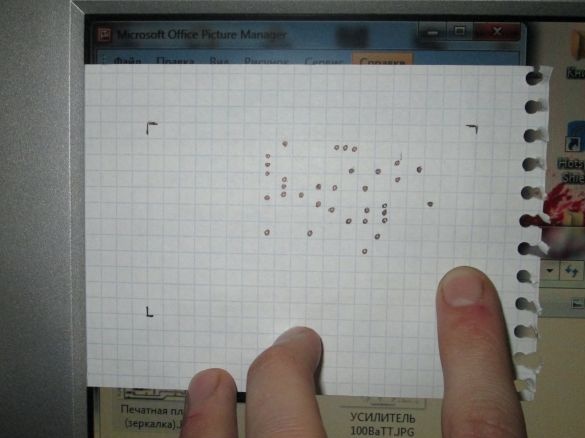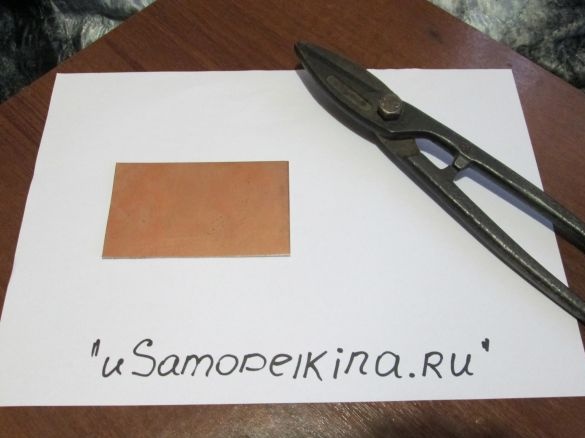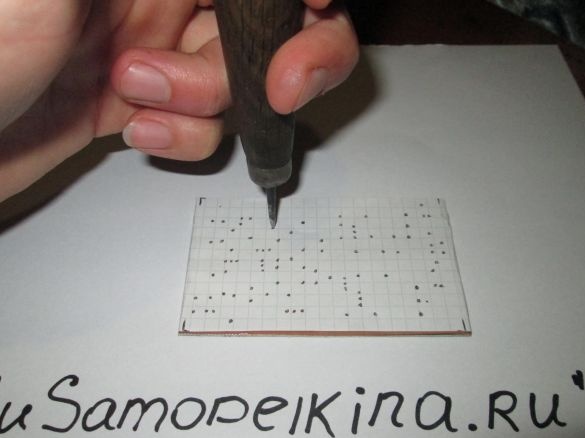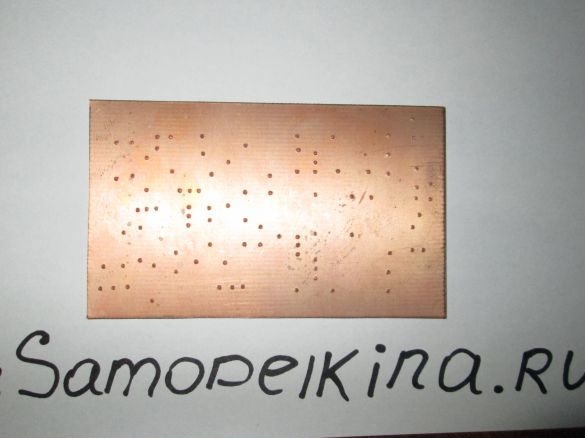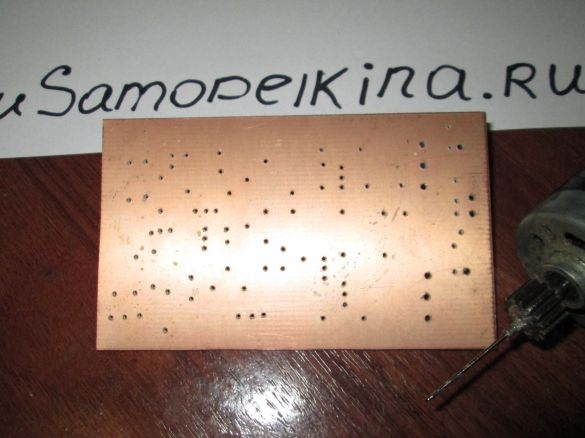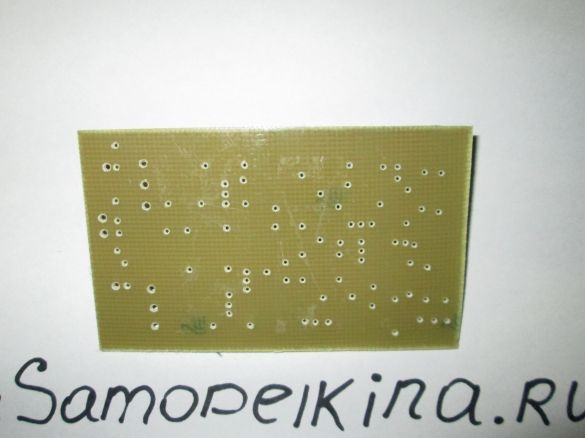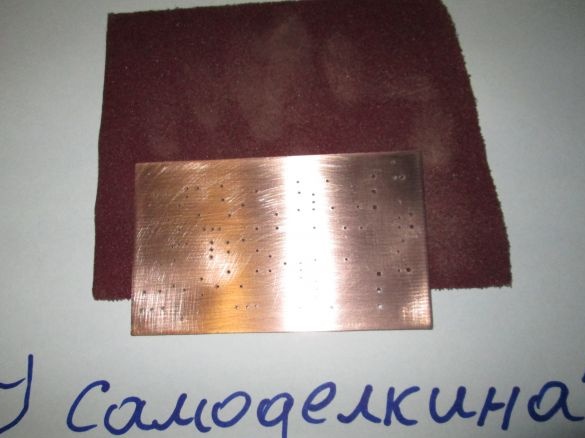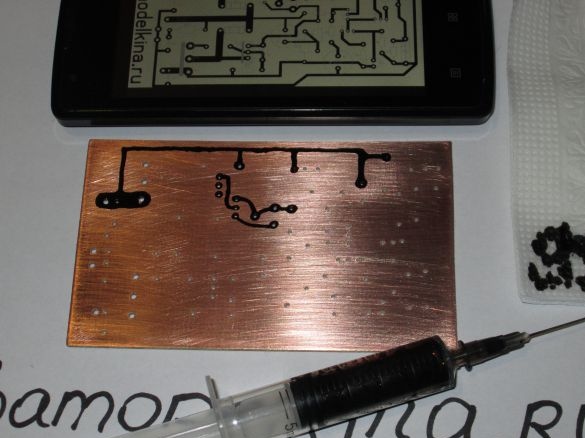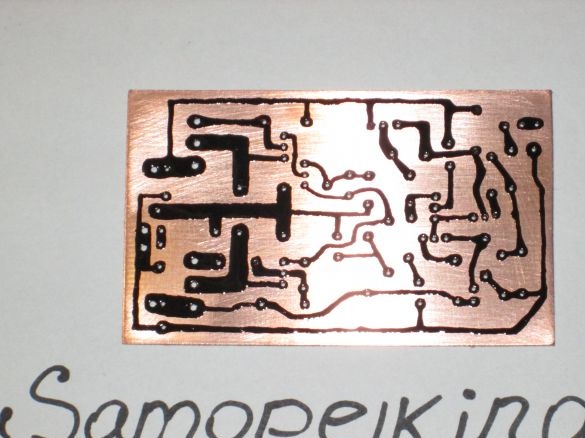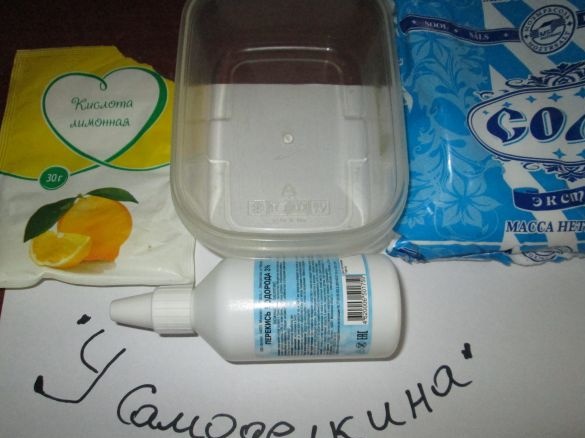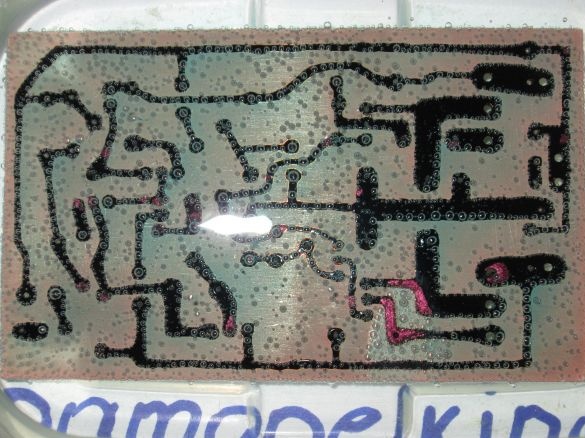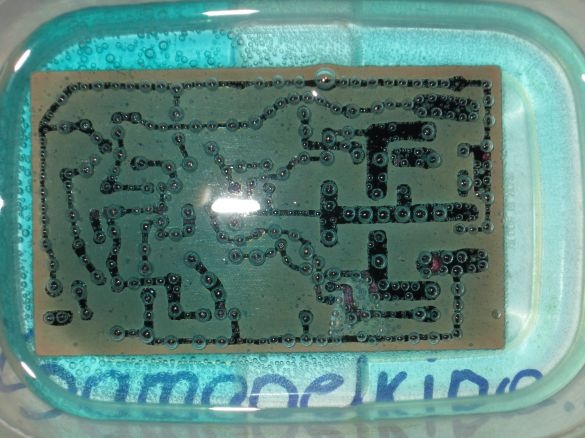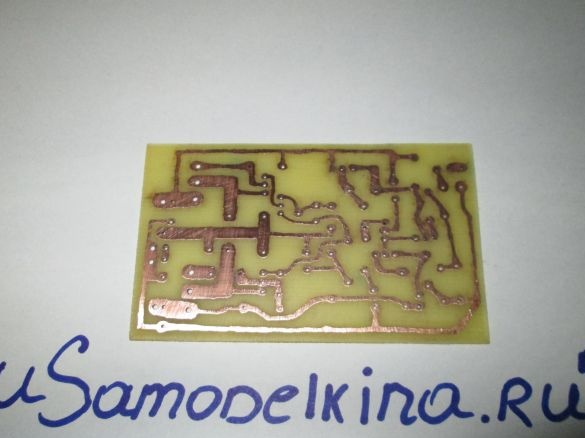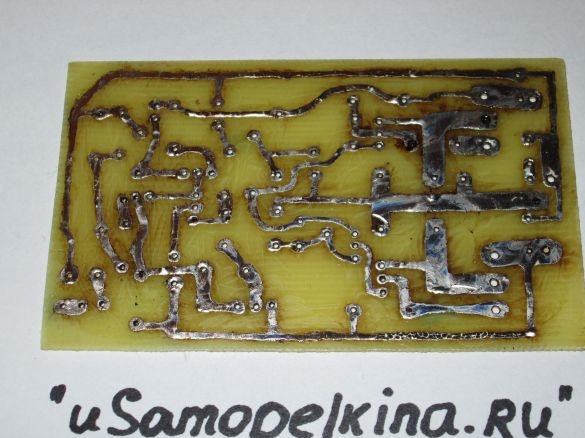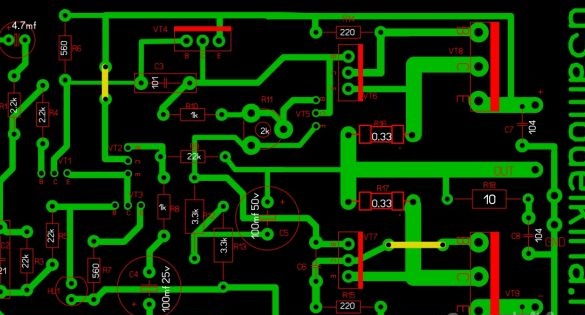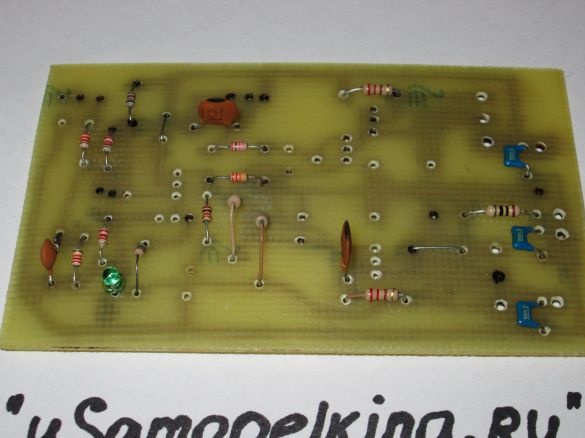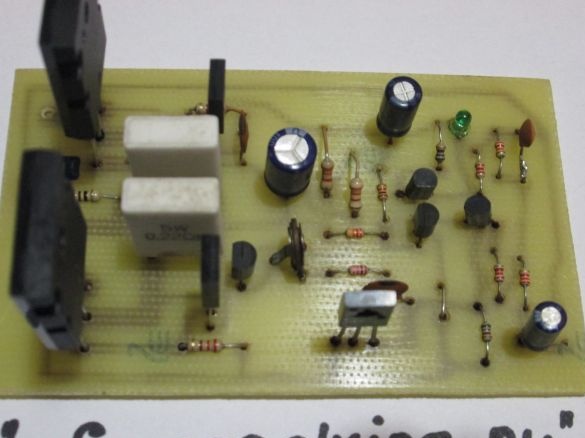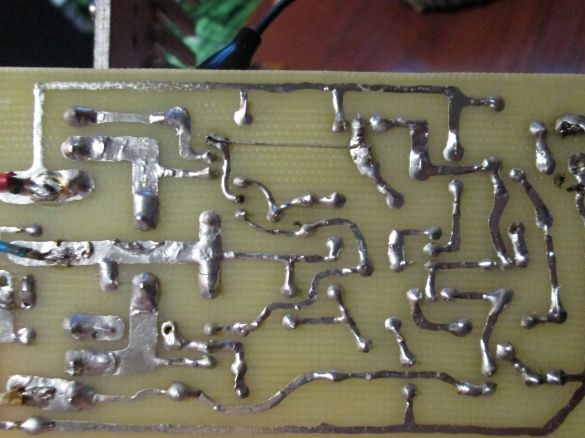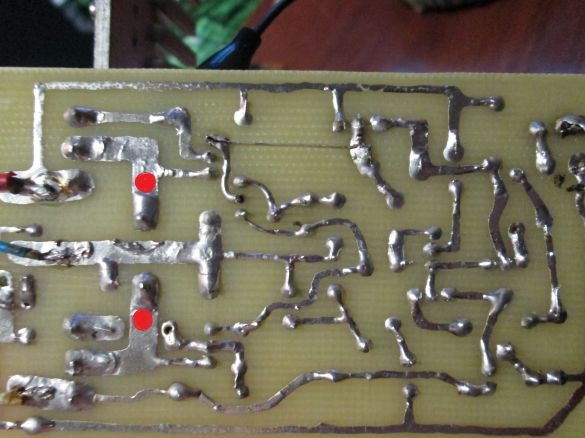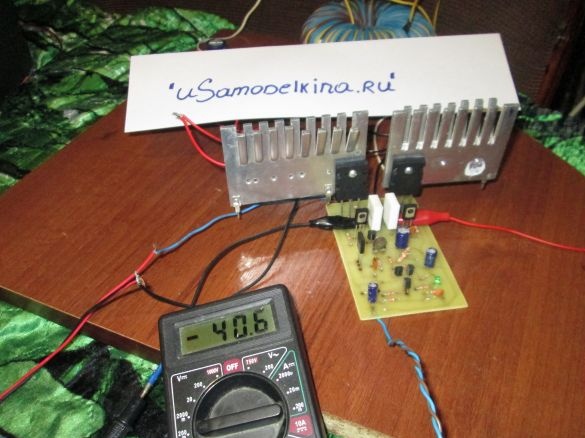Hello! In this article I will describe in detail how to make a cool amplifier for the home or auto. The amplifier is simple to assemble and configure, and has good sound quality. Below is a schematic diagram of the amplifier itself.
The circuit is made on transistors and does not have scarce parts. The power supply of the amplifier is bipolar +/- 35 volts, with a load resistance of 4 Ohms. When connected with 8 ohm load, the power can be increased to +/- 42 volts.
Resistors R7, R8, R10, R11, R14 - 0.5 W; R12, R13 - 5 watts; the remaining 0.25 watts.
R15 trim 2-3 kOhm.
Transistors: Vt1, Vt2, Vt3, Vt5 - 2sc945 (usually c945 is written on the body).
Vt4, Vt7 - BD140 (Vt4 can be replaced with our Kt814).
Vt6 - BD139.
Vt8 - 2SA1943.
Vt9 - 2SC5200.
ATTENTION! The c945 transistors have a different pinout: ECB and EBK. Therefore, before soldering, you need to check with a multimeter.
The LED is ordinary, green, GREEN! He is not here for beauty! And it should NOT be super-bright. Well, the rest of the details can be seen in the diagram.
And so, let's go!
To make an amplifier we need instruments:
soldering iron
-tin
- rosin (preferably liquid), but you can get by with the usual
scissors for metal
nippers
-awl
- medical syringe, any
- drill 0.8-1 mm
- drill 1.5 mm
-drill (preferably some mini drill)
-sandpaper
and multimeter.
Materials:
- one-sided textolite board measuring 10x6 cm
copybook sheet
-a pen
-varnish for wood (preferably dark)
- small container
-baking soda
-lemon acid
-salt.
I will not list the list of radio components, they can be seen in the diagram.
Step 1 Cooking board
And so, we need to make a board. Since I don’t have a laser printer (I don’t have anything at all), we will manufacture the board “the old fashioned way”!
First you need to drill holes on the board for future parts. Whoever has the printer, just print this picture:
if not, then we need to transfer the marking to paper for drilling. You will understand how to do this in the photo below:
when you transfer, do not forget about the size of the board! (10 by 6 cm)
something like that!
We cut off the board size we need with scissors for metal.
Now we attach the sheet to the cut out board and fix it with tape so that it does not move out. Next, we take an awl and outline (by points) where we will drill.
You can of course do without an awl and drill right away, but the drill can move out!
Then it should turn out like this:
Now you can start drilling. We drill holes 0.8 - 1 mm. As I said above: it is better to use a mini drill, since the drill is very thin and breaks easily. For example, I use a motor from a screwdriver.
We drill holes for transistors Vt8, Vt9 and for wires with a drill of 1.5 mm. Now we need to sandpaper our board.
Now you can start drawing our tracks. We take a syringe, grind the needle so that it is not sharp, we collect varnish and go!
It is better to trim the jambs when the varnish has already hardened.
Step 2 Poison the board
To etch boards, I use the simplest and cheapest method:
100 ml of peroxide, 4 teaspoons of citric acid and 2 teaspoons of salt.
Stir and immerse our board.
Next, we clean off the varnish and it turns out like this!
It is advisable to immediately cover all the tracks with tin for the convenience of soldering parts.
Step 3 Soldering and tuning
It will be convenient to solder in this picture (view from the side of the parts)
For convenience, from the beginning we solder all small parts, resistors, etc.
And then everything else.
After soldering, the board must be washed from rosin. You can wash it with alcohol or acetone. You can even use gasoline to the extreme.
Now you can try to turn it on! With proper assembly, the amplifier works immediately. The first time you turn on the resistor R15, turn it towards the maximum resistance (measure with the device). Do not connect the column! Output transistors are MANDATORY to the radiator, through insulating gaskets.
And so: they turned on the amplifier, the LED should be on, we measure the output voltage with a multimeter. There is no constant, then everything is fine.
Next, you need to set the quiescent current (75-90mA): to do this, close the input to ground, do not connect the load! Set the mode to 200mV on the multimeter and connect the probes to the collectors of the output transistors. (marked with red dots in the photo)
Next, by slowly rotating the resistor R15, you need to set 40-45 mV.
Exposed, now you can connect the speaker and drive the amplifier at low volume for 10-15 minutes. Then again it will be necessary to correct the quiescent current.
Well, that’s it, you can enjoy it!
Here is the video of the amplifier:


